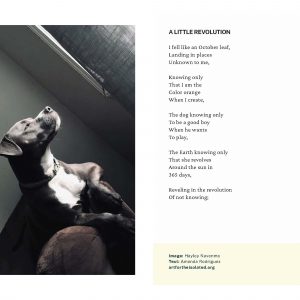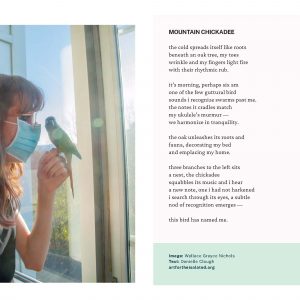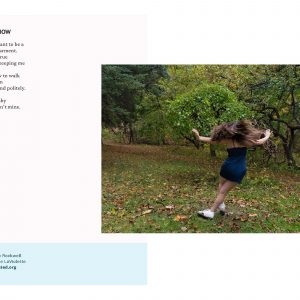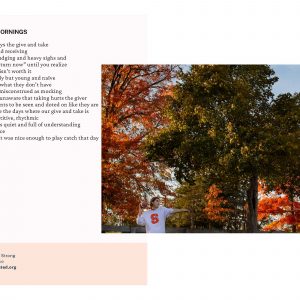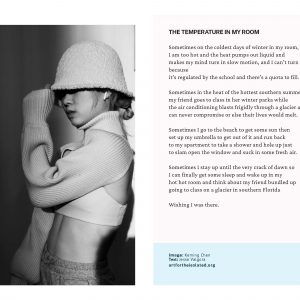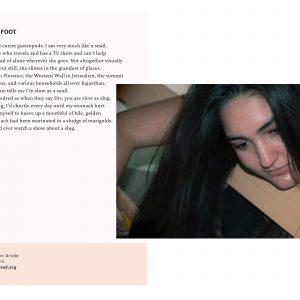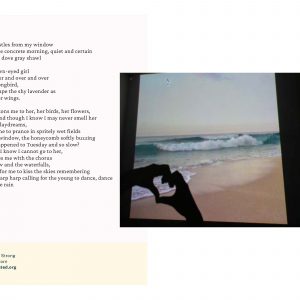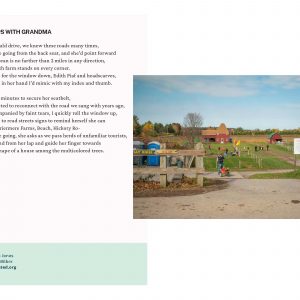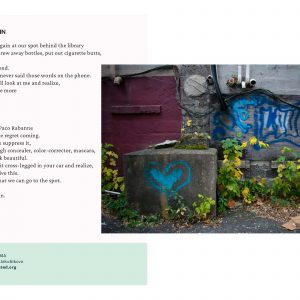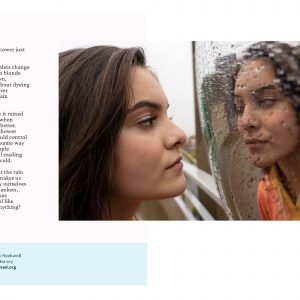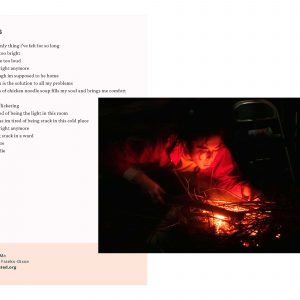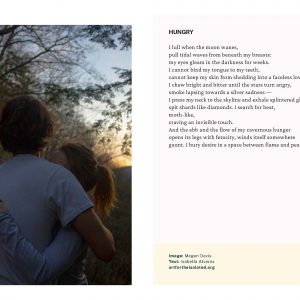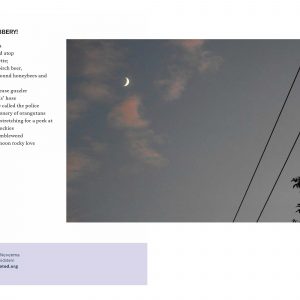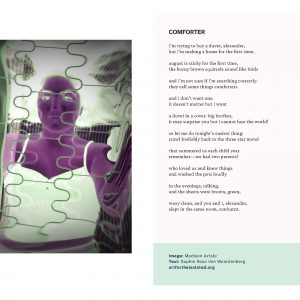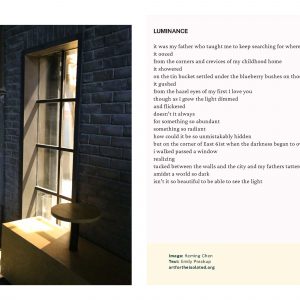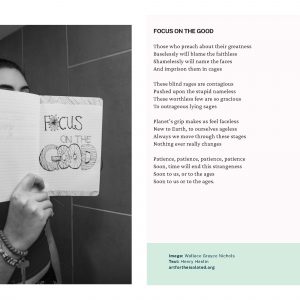Faced with creating classwork for an incoming cohort of first-year photography students, hampered by the constraints imposed by the coronavirus pandemic, Associate Professor Doug DuBois of the College of Visual and Performing Arts’ (VPA) Department of Transmedia came up with a novel idea. “Given the pandemic restrictions, I was wracking my brains over the summer, trying to figure out what I was going to do with my classes,” he says. “It was a fraught moment, not knowing if we would be able to have class in person the entire semester or get shut down.
As he was mulling his options, DuBois received a call from the California-based collective Art for the Isolated to submit photos for the postcards they print and distribute to hospitals across the country. Images paired with poetry in both English and Spanish are given to isolated patients and their caregivers. It occurred to DuBois that this was something his new photography students could do, and he pitched the idea to Art for the Isolated founders Joshua Watson and Juliet San Nicolas de Bradley. “I asked them how they would feel about a class of first-year college students learning during a pandemic and trying to make work that addresses a real need,” he says. “They went for it.”
In the following weeks, they discussed the types of images that would be suitable and put a plan in place. The problem was the poetry—who was going to write it? Archival poems were available but didn’t seem quite appropriate. “Then I thought maybe we could work with student poets,” DuBois says. “Joshua and Juliet liked that idea, too.”
DuBois didn’t know any poetry professors, but looking online, he discovered entry-level poetry workshops taught by Sarah Harwell, associate teaching professor and associate director of the creative writing program in the College of Arts and Sciences. Long impressed by her work as co-director of the Living Writers Program, he contacted Harwell and found a willing collaborator. “I was thrilled with the idea,” she says. “The semester loomed in front of us, filled with unknowns, Zooms and possible lockdowns. This project seemed to be a way to make meaning out of the chaos of the year.”
Overcoming the Challenges
The logistics of coordinating the two classes took some effort, according to DuBois, but once in place, the collaboration and teamwork blossomed. The students were asked to think of their work as a gift to someone, offering comfort and solace. They discussed how to determine what recipients would want or need to receive as a gift. With that in mind, the photographers created images that the poetry students wrote poems for, and the poetry students wrote poems to inspire the photographers. The final result was 18 photo/poetry pairs in all. “What people in hospitals would want to see was the biggest thing I kept in mind while taking photographs,” says Megan Brianna Jonas ’24, an art photography major. “Patients in quarantine have seen nothing but the walls in their room for days on end. They wouldn’t want to see another confined space but a reminder of the outside world and freedom.”
The impact of the coronavirus was a constant consideration and obstacle for both groups. While the poets were free to roam the world in their imaginations—writing about such topics as Ireland, the beach, a snail, a trip with a grandmother—like their VPA colleagues, they still had to deal with restrictions to their own personal freedom, feelings of isolation and worries about the pandemic. The lack of mobility meant the photographers had to work around stringent coronavirus limitations to take their pictures. As first-year students, they didn’t have cars, had concerns about riding buses and were limited in the number of people with whom they could interact. “The restrictions did force me to be more creative with my images,” says art photography major Naomi Strong ’24. “To socially distance and avoid as much contact with others as possible, I challenged myself to use subjects other than people in my shots.” A trip to a local park offered her the unexpected opportunity to photograph a dog watching people tossing a football. “It was tricky because dogs aren’t aware that they are modeling and aren’t fond of sitting still,” she says. “But in the end, I really loved how the photos turned out.”
Not only was DuBois’s novel idea of working together with another school a first for him and Harwell, it was also the first time Art for the Isolated collaborated with a university. “We appreciated the student engagement with the project from start to finish,” says Watson. “The work they made in response demonstrated creative approaches to the limitations of quarantine and a concern for those affected most by the pandemic.” Some of the students’ work will be used for the organization’s large print run, and others have been archived for a potential project in the future.
The collaboration brought dimensions to the learning that wouldn’t have been available otherwise. “The students got to experience how another art form can influence, modulate and enhance their own art,” Harwell says. “While the organization we collaborated with is called Art for the Isolated, the actual process was the opposite. The students created art in connection to others.”
As a grand finale, the classes held a poetry reading/art exhibition via Zoom, attended by the faculty, Art for the Isolated staff, the students and their families. It was a satisfying end to a semester that had started with such a high level of trepidation. “The students earnestly went for it and rose to the challenge,” says DuBois. “It was a great, great way to learn and I would do it again, in a heartbeat.” — Paula Meseroll



